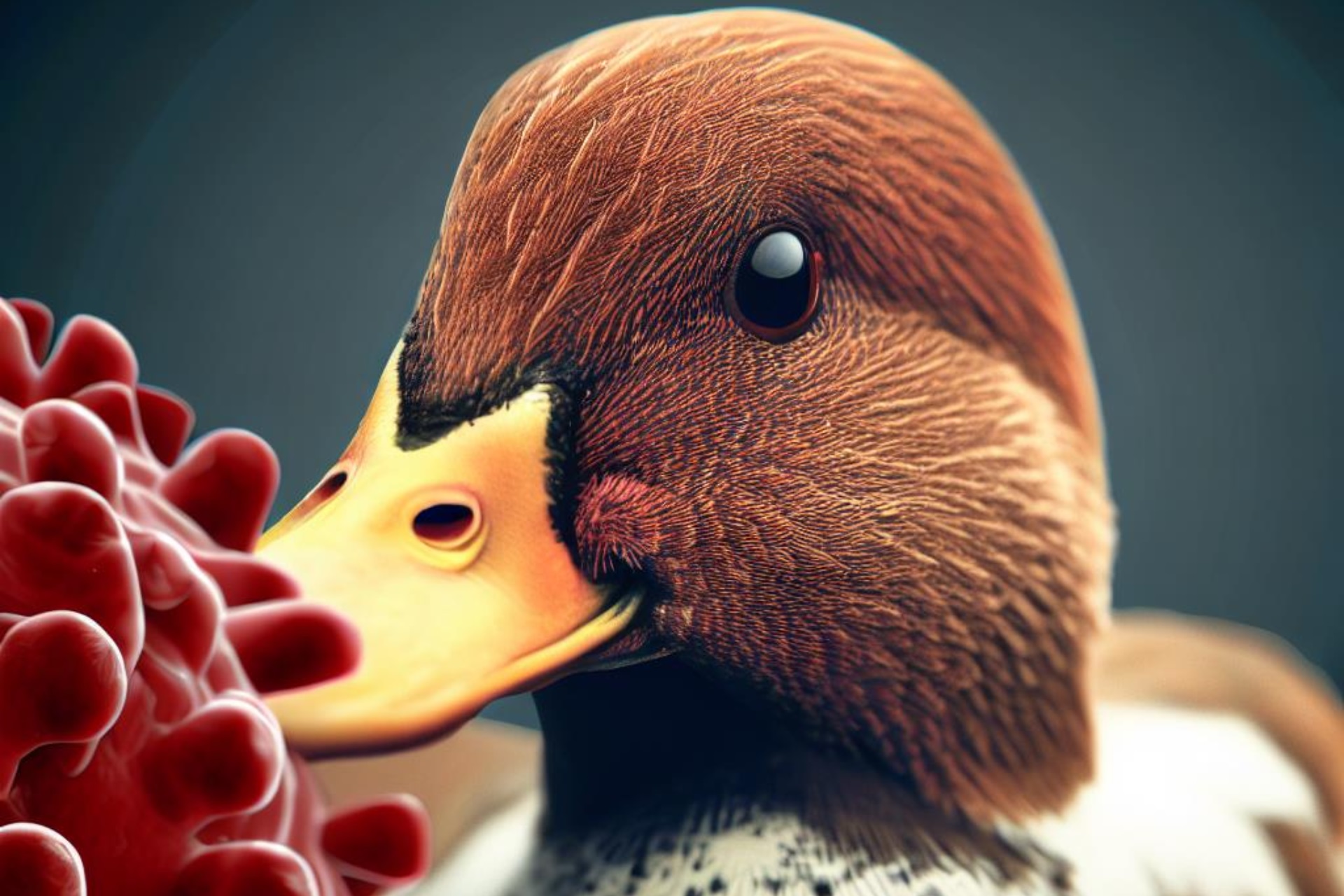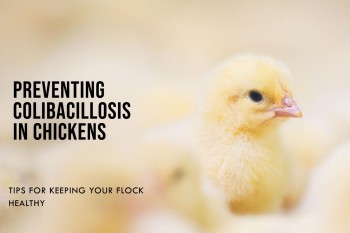Duck Virus Hepatitis: Causes, Symptoms, and Treatment
- Briefly explain what Duck Virus Hepatitis (DVH) is and its
significance in veterinary medicine.
- Highlight the importance of early detection and proper
treatment for the well-being of ducks.
I. Overview of Duck Virus Hepatitis:
A. Definition and classification of Duck Virus Hepatitis
B. The causative
agent: Duck Hepatitis Virus (DHV)
C. Prevalence and
affected duck species
D. Transmission
routes
II. Causes and Risk Factors:
A. Environmental
factors contributing to DHV spread
B. Role of
contaminated water sources
C. Interactions
between infected and susceptible ducks
D. Impact of stress and
immunosuppression on disease development
III. Clinical Signs and Symptoms:
A. Incubation period
and disease progression
B. Key clinical
manifestations
1. Neurological
symptoms
2. Digestive
system abnormalities
3. Hepatic dysfunction
C. Variations in
symptoms based on duck age and species
IV. Diagnosis:
A. Veterinary
examination and medical history evaluation
B. Laboratory tests
for DVH diagnosis
1. Blood tests
2. Liver enzyme
analysis
3. Molecular
testing (PCR)
C. Differential
diagnosis to rule out other similar diseases
V. Treatment and Management:
A. Supportive care
and symptomatic treatment
B. Isolation and
biosecurity measures
C. Nutritional
management and fluid therapy
D. Antiviral therapy
(if available)
E. Vaccination and
preventive measures
VI. Prevention and Control:
A. Importance of
biosecurity practices
B. Vaccination
strategies and schedules
C. Regular
monitoring and surveillance of duck populations
D. Proper sanitation
and hygiene protocols
E. Education and
awareness for duck farmers and breeders
- Summarize the key points about Duck Virus Hepatitis, its
causes, symptoms, diagnosis, and treatment.
- Emphasize the significance of early detection, effective
management, and prevention strategies.
- Encourage readers to consult with a veterinarian for
further guidance and information.
Duck Virus Hepatitis (DVH) is a viral disease that affects
ducks and has significant implications in veterinary medicine. It is crucial to
understand DVH and its impact on duck populations to ensure early detection and
appropriate treatment for the well-being of these birds.
I. Overview of Duck Virus Hepatitis:
A. Definition and classification of Duck Virus Hepatitis:
Duck Virus
Hepatitis, also known as Duck Viral Enteritis (DVE) or Duck Plague, is a highly
contagious viral disease that primarily affects ducks. It belongs to the family
Adenoviridae and the genus Aviadenovirus. The disease is characterized by
severe inflammation and damage to the liver, resulting in significant morbidity
and mortality among infected ducks.
B. The causative agent: Duck Hepatitis Virus (DHV):
The primary
causative agent responsible for Duck Virus Hepatitis is the Duck Hepatitis
Virus (DHV), which is a member of the Aviadenovirus genus. DHV is a
double-stranded DNA virus that targets the liver cells of ducks, causing
hepatic necrosis and dysfunction.
C. Prevalence and affected duck species:
Duck Virus Hepatitis
is a worldwide disease that can affect various species of domestic and wild
ducks. Muscovy ducks and Pekin ducks are particularly susceptible, while other
species such as Mallard ducks and geese can also be affected. Outbreaks of DVH
have been reported in different parts of the world, including Asia, Europe, and
North America.
D. Transmission routes:
DVH can spread
through various transmission routes. The virus can be shed in the feces,
saliva, and nasal secretions of infected ducks, contaminating the environment
and water sources. Healthy ducks can contract the virus through direct contact
with infected individuals or by consuming contaminated food or water. The virus
can also be transmitted through contaminated equipment, clothing, or through
vectors like insects.
II. Causes and Risk Factors:
A. Environmental factors contributing to DHV spread:
The spread of Duck
Hepatitis Virus (DHV) is greatly influenced by environmental factors. Areas
with a high density of ducks, such as farms, ponds, or wetlands, provide
favorable conditions for viral transmission. Crowding and close proximity among
ducks increase the likelihood of viral shedding and subsequent contamination of
the environment. Poor sanitation practices and inadequate waste management
contribute to the persistence of the virus in the environment, further
facilitating its spread.
B. Role of contaminated water sources:
Contaminated water
plays a crucial role in the transmission of Duck Virus Hepatitis. Ducks are
aquatic birds and have a natural inclination to spend a significant amount of
time in water. DHV can survive in water for extended periods, allowing healthy
ducks to come into contact with the virus. Contaminated water sources, such as
ponds, lakes, or drinking water reservoirs, act as reservoirs for the virus and
pose a significant risk to susceptible ducks.
C. Interactions between infected and susceptible ducks:
The direct
interaction between infected and susceptible ducks plays a pivotal role in the
transmission of DHV. Infected ducks shed the virus in their feces, saliva, and
nasal secretions. When susceptible ducks come into contact with these
secretions, the virus can enter their bodies, leading to infection. Close
proximity, social behavior, and communal roosting or nesting sites facilitate
the spread of the virus within a duck population.
D. Impact of stress and immunosuppression on disease development:
Stress and
immunosuppression can contribute to the development of Duck Virus Hepatitis in
ducks. Stressors such as transportation, changes in environmental conditions,
overcrowding, or inadequate nutrition weaken the immune system of ducks, making
them more susceptible to viral infections. Additionally, other concurrent
diseases or underlying immunosuppressive conditions can further compromise the
ducks' immune response, increasing the severity of DHV infection.
III. Clinical Signs and Symptoms:
A. Incubation period and disease progression:
Duck Virus Hepatitis
(DVH) has an incubation period ranging from 7 to 14 days after exposure to the
virus. During this period, infected ducks may not show any visible signs of
illness. As the disease progresses, clinical symptoms begin to manifest, and the
severity of the infection varies depending on individual ducks and other
contributing factors.
B. Key clinical manifestations:
Duck Virus Hepatitis
is characterized by a range of clinical manifestations, affecting various organ
systems. The key clinical manifestations include:
1. Neurological symptoms:
Infected ducks may
exhibit neurological signs such as ataxia (loss of coordination), head tilt,
tremors, paralysis, or convulsions. These symptoms are indicative of the virus
affecting the central nervous system and can vary in severity.
2. Digestive system abnormalities:
Ducks with DVH often
display digestive system abnormalities. These can include reduced appetite,
diarrhea, greenish or watery feces, and gastrointestinal disturbances. The virus
causes inflammation and damage to the digestive tract, leading to digestive
disturbances.
3. Hepatic dysfunction:
Duck Virus Hepatitis
primarily targets the liver, resulting in hepatic dysfunction. Ducks may show
signs of jaundice, characterized by yellowing of the skin, mucous membranes,
and eyes. Hepatomegaly (enlargement of the liver), ascites (fluid accumulation
in the abdominal cavity), and hepatic necrosis can also occur.
C. Variations in symptoms based on duck age and species:
The symptoms of Duck
Virus Hepatitis can vary based on the age and species of ducks. Younger ducks
may exhibit more severe neurological signs, while adult ducks may show a
greater emphasis on hepatic dysfunction. Certain duck species, such as Muscovy
ducks and Pekin ducks, are more susceptible to the disease and may display more
pronounced clinical symptoms compared to other species.
IV. Diagnosis:
A. Veterinary examination and medical history evaluation:
The diagnosis of
Duck Virus Hepatitis (DVH) begins with a thorough veterinary examination and
evaluation of the duck's medical history. The veterinarian will assess the
clinical signs, observe any abnormal behavior, and inquire about the duck's
previous health records and potential exposure to DVH.
B. Laboratory tests for DVH diagnosis:
Laboratory tests are
essential for confirming the presence of Duck Virus Hepatitis. The following
tests are commonly used for DVH diagnosis:
1. Blood tests:
Blood tests, such as
hematology and serology, can provide valuable information about the duck's
overall health and immune response. Specific antibody tests can detect the
presence of antibodies against Duck Hepatitis Virus, indicating a past or
current infection.
2. Liver enzyme analysis:
Analysis of liver
enzymes, including alanine aminotransferase (ALT) and aspartate
aminotransferase (AST), can reveal liver damage and dysfunction. Elevated
levels of these enzymes in the blood can indicate hepatic involvement and
support the diagnosis of DVH.
3. Molecular testing (PCR):
Polymerase Chain
Reaction (PCR) is a sensitive and specific diagnostic tool used to detect the
genetic material of Duck Hepatitis Virus in various samples, including blood,
feces, or liver tissue. PCR can accurately identify the presence of the virus
and differentiate it from other similar viral infections.
C. Differential diagnosis to rule out other similar diseases:
Differential
diagnosis is crucial to distinguish Duck Virus Hepatitis from other diseases
that may present with similar clinical signs. Diseases such as Avian Influenza,
Newcastle Disease, and other viral or bacterial infections can have overlapping
symptoms. Veterinary professionals may conduct additional tests, including
viral isolation, serological tests, or histopathological examination, to rule
out these diseases and confirm DVH.
V. Treatment and Management:
A. Supportive care and symptomatic treatment:
There is no specific
antiviral treatment available for Duck Virus Hepatitis (DVH). Therefore,
supportive care and symptomatic treatment are essential for managing affected
ducks. This includes providing a comfortable and stress-free environment,
maintaining proper hygiene, and ensuring access to clean water and nutritious
food. Additionally, symptomatic treatment may involve administering medications
to alleviate specific symptoms, such as anti-inflammatory drugs for reducing
liver inflammation or anticonvulsants for ducks displaying neurological signs.
B. Isolation and biosecurity measures:
Isolation of
infected ducks is crucial to prevent the spread of DVH to healthy individuals.
Infected ducks should be separated from the rest of the flock and kept in a
designated isolation area. Strict biosecurity measures should be implemented,
including disinfection protocols, proper waste management, and restricted
access to the isolation area. This helps minimize the risk of transmitting the
virus to other ducks and reduces the overall disease burden.
C. Nutritional management and fluid therapy:
Ducks affected by DVH may experience reduced
appetite and digestive disturbances. Therefore, providing a highly digestible
and nutritious diet is essential for maintaining their overall health and
supporting their immune system. Additionally, fluid therapy may be necessary to
correct dehydration and electrolyte imbalances. Oral or intravenous
administration of fluids, electrolytes, and vitamins can help restore hydration
and improve the duck's condition.
D. Antiviral therapy (if available):
Currently, there are
no specific antiviral treatments approved for Duck Virus Hepatitis. However, in
certain cases, experimental antiviral therapies may be explored under the
supervision of a veterinarian. These therapies aim to inhibit viral replication
and reduce the severity of the disease. It is important to note that the
efficacy of such treatments may vary, and their use should be guided by
professional veterinary advice.
E. Vaccination and preventive measures:
Vaccination plays a
crucial role in preventing Duck Virus Hepatitis. Vaccines, specifically
designed to protect against DVH, are available and should be administered
according to the recommended vaccination schedule. Vaccination helps stimulate
the duck's immune system to produce protective antibodies against the virus,
reducing the likelihood of infection and disease development. Additionally,
implementing strict biosecurity measures, such as controlling access to the
farm, proper disinfection protocols, and regular surveillance, can help prevent
the introduction and spread of DVH.
VI. Prevention and Control:
A. Importance of biosecurity practices:
Implementing robust
biosecurity practices is crucial in preventing and controlling Duck Virus
Hepatitis (DVH). This includes strict control of access to the farm, regular
disinfection of facilities, proper waste management, and preventing contact
between infected and susceptible ducks. Biosecurity measures help minimize the
risk of introducing and spreading the virus within the duck population.
B. Vaccination strategies and schedules:
Vaccination plays a
pivotal role in preventing DVH. Following the recommended vaccination
strategies and schedules is essential for protecting ducks against the disease.
Vaccines specifically formulated for DVH should be administered according to
the instructions provided by the vaccine manufacturer and in consultation with
a veterinarian.
C. Regular monitoring and surveillance of duck populations:
Regular monitoring
and surveillance of duck populations are necessary to detect any potential
cases of DVH promptly. This involves routine health checks, observation of clinical
signs, and appropriate diagnostic testing when necessary. Timely detection
helps initiate prompt management and preventive measures.
D. Proper sanitation and hygiene protocols:
Maintaining proper
sanitation and hygiene protocols is crucial in preventing DVH. This includes
regular cleaning and disinfection of duck housing, equipment, and water
sources. Additionally, proper waste management and the removal of contaminated
materials help reduce the risk of viral transmission.
E. Education and awareness for duck farmers and breeders:
Educating duck
farmers and breeders about DVH, its causes, symptoms, and preventive measures
is vital. Increasing awareness about the importance of vaccination, biosecurity
practices, and early detection can significantly reduce the impact of DVH.
Educational resources and training programs can help farmers make informed
decisions and implement effective preventive measures.
Duck Virus Hepatitis
(DVH) is a highly contagious viral disease that affects ducks worldwide. Early
detection, proper diagnosis, and effective management are essential for the
well-being of ducks and the prevention of disease spread. Vaccination, strict
biosecurity practices, regular monitoring, and proper sanitation are key
preventive measures. By implementing these strategies and consulting with a
veterinarian, duck farmers can safeguard their flocks and mitigate the impact
of DVH.


















